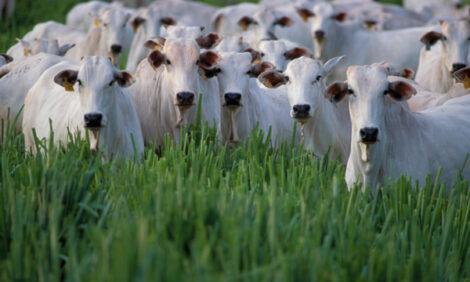



Global beef demand shifts focus to exports over domestic markets in South America
Export volumes continue to growAccording to a recent RaboResearch report, as global beef demand rises, South American producers are prioritising exports over domestic markets.
Despite a projected contraction in production for 2025, export volumes continue to grow, driven by strong international demand, particularly from China. This shift is reshaping the dynamics of local consumption and pricing, with significant implications for the industry.
South American beef supply expected to contract in 2025
Production in the four largest South American beef-producing and exporting countries – Brazil, Argentina, Uruguay, and Paraguay – is anticipated to contract in 2025.
"We expect Brazil, which accounts for 63% of South America's supply, to reduce its production by 500,000 metric tons this year," said Angus Gidley-Baird, Senior Analyst – Animal Protein for RaboResearch.
The high level of female slaughter, driven by strong prices through 2022 and 2023, is the main reason for declining production.
Export volumes continue to grow
Despite the production drop, declining consumer purchasing power and reduced domestic beef consumption have led processors to focus on export volume growth. This strategy has resulted in a decline in local consumption across all four countries.
Over the past decade, exports have significantly outpaced production increases, largely due to China's rising demand for South American animal proteins since 2019. In 2024, South America supplied 76% of China's total beef imports, with Brazil, Argentina, and Uruguay contributing, with 47%, 21%, and 8%, respectively.
Growth in exports at the expense of domestic supply likely to continue
The export market will be the primary focus for South American beef producers in the coming year. While beef consumption has a much larger share of South American diets when compared to other regions of the world, domestic economic pressures, increasing availability of other proteins and the increased demand from export markets has seen beef consumption per capita decline.
The weaker economic conditions and competition from export markets has seen the cost of beef increase. Between 2020 and 2024, the volume of beef that could be purchased on the basic wage dropped across all countries. In Brazil, the average consumer now gets 20% less beef on the basic wage than they did four years ago.
“We believe this trend will continue in the coming years, making more beef available for the export market. Poultry is already the largest consumed protein in Brazil, Paraguay and Argentina. But other proteins such as pork and seafood have smaller shares of the diet than in other markets and therefore in our view have the capacity to increase,” said Gidley-Baird.
However, the cultural appeal of beef remains strong and it is therefore not to be expected that per capita consumption levels of beef drop much more. The industry will need to strike a balance between stronger pricing signals to grow export markets, licensing and carcass utilization. It may be the case that a more informal processing sector develops to meet the domestic consumption needs.
Global beef outlook: Price disparities, production decline, and trade uncertainty
North American cattle prices are rising in 2025 due to low inventory and strong demand, while Southern Hemisphere producers operate at nearly half these prices. Brazilian cattle prices surged at the end of 2024 but are expected to drop in Q2 as supply increases.
Global beef production is set to decline in 2025, with significant reductions expected in New Zealand and Brazil. Additionally, the new US administration's tariff proposals on Mexico and Canada have introduced trade uncertainty, potentially impacting global markets.



